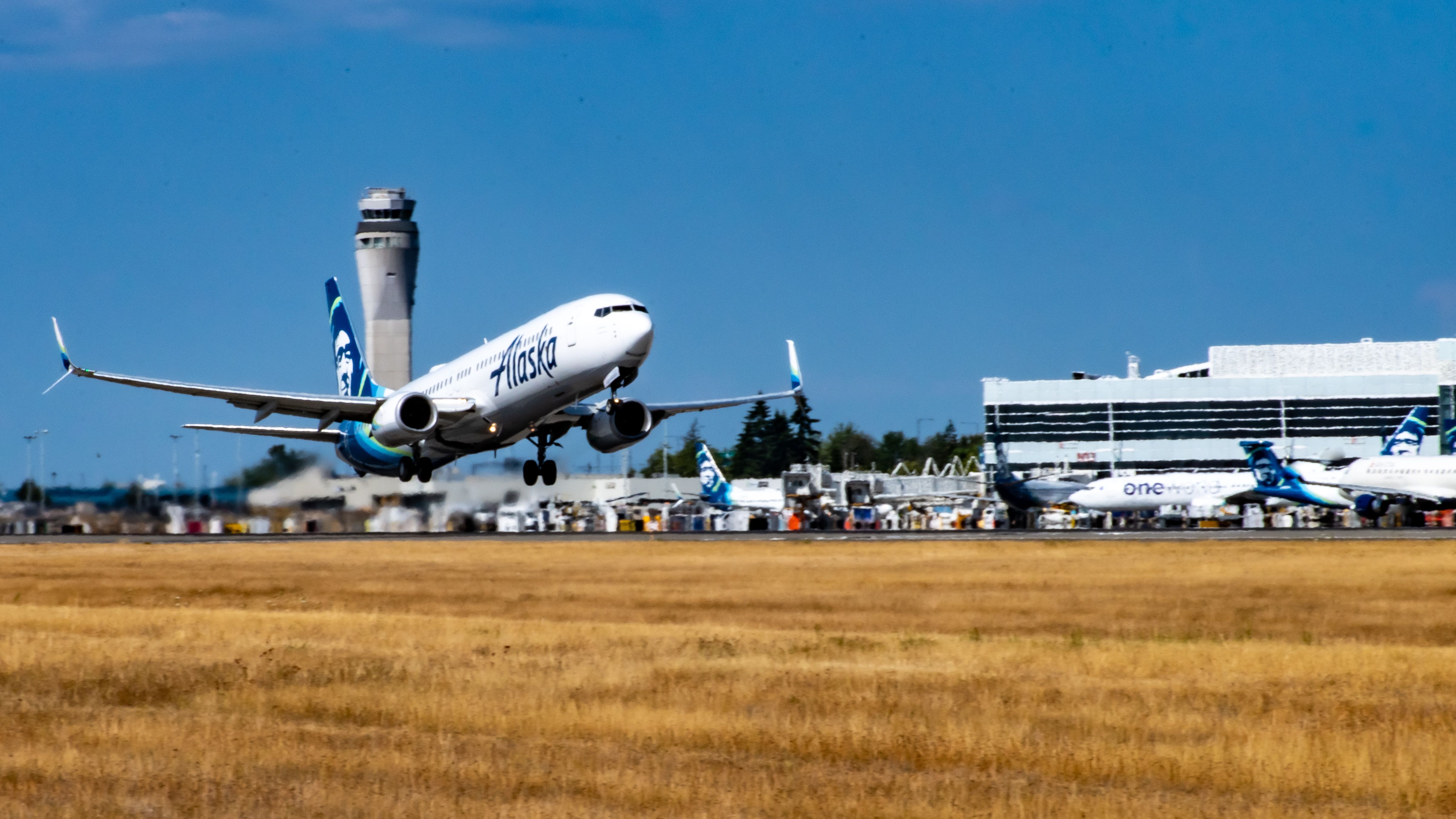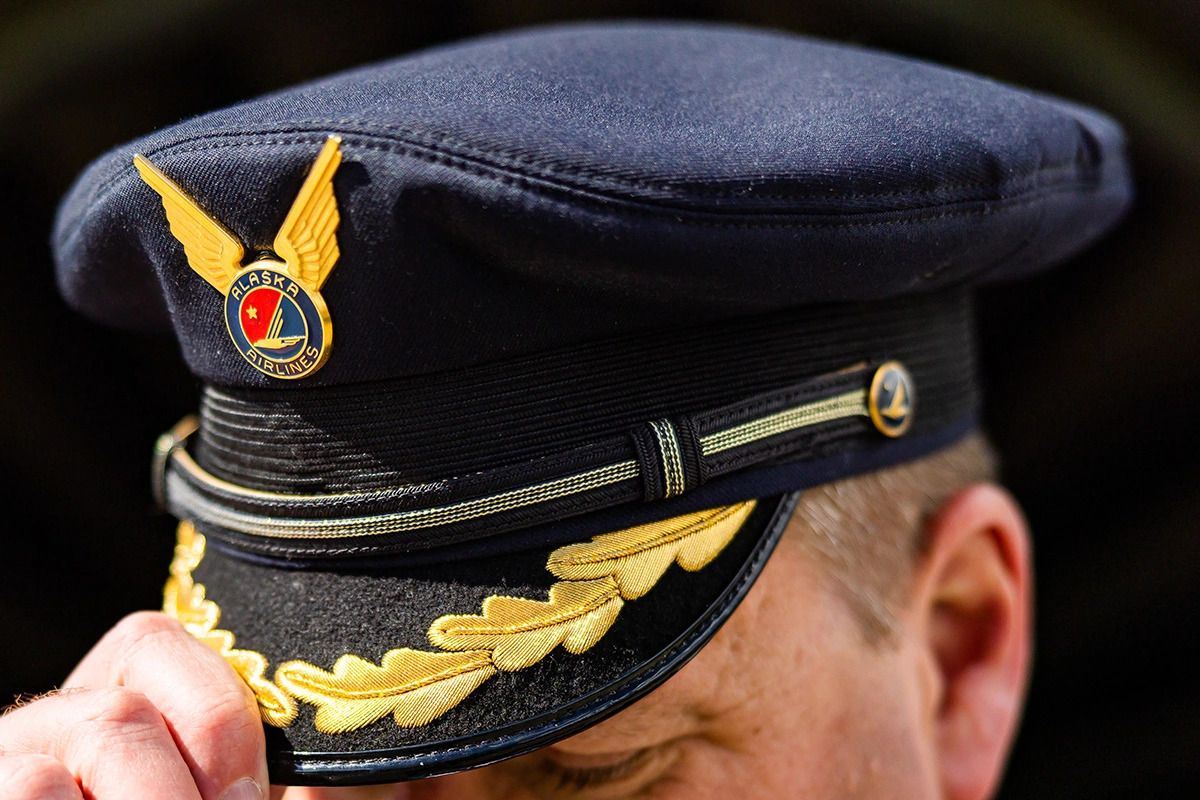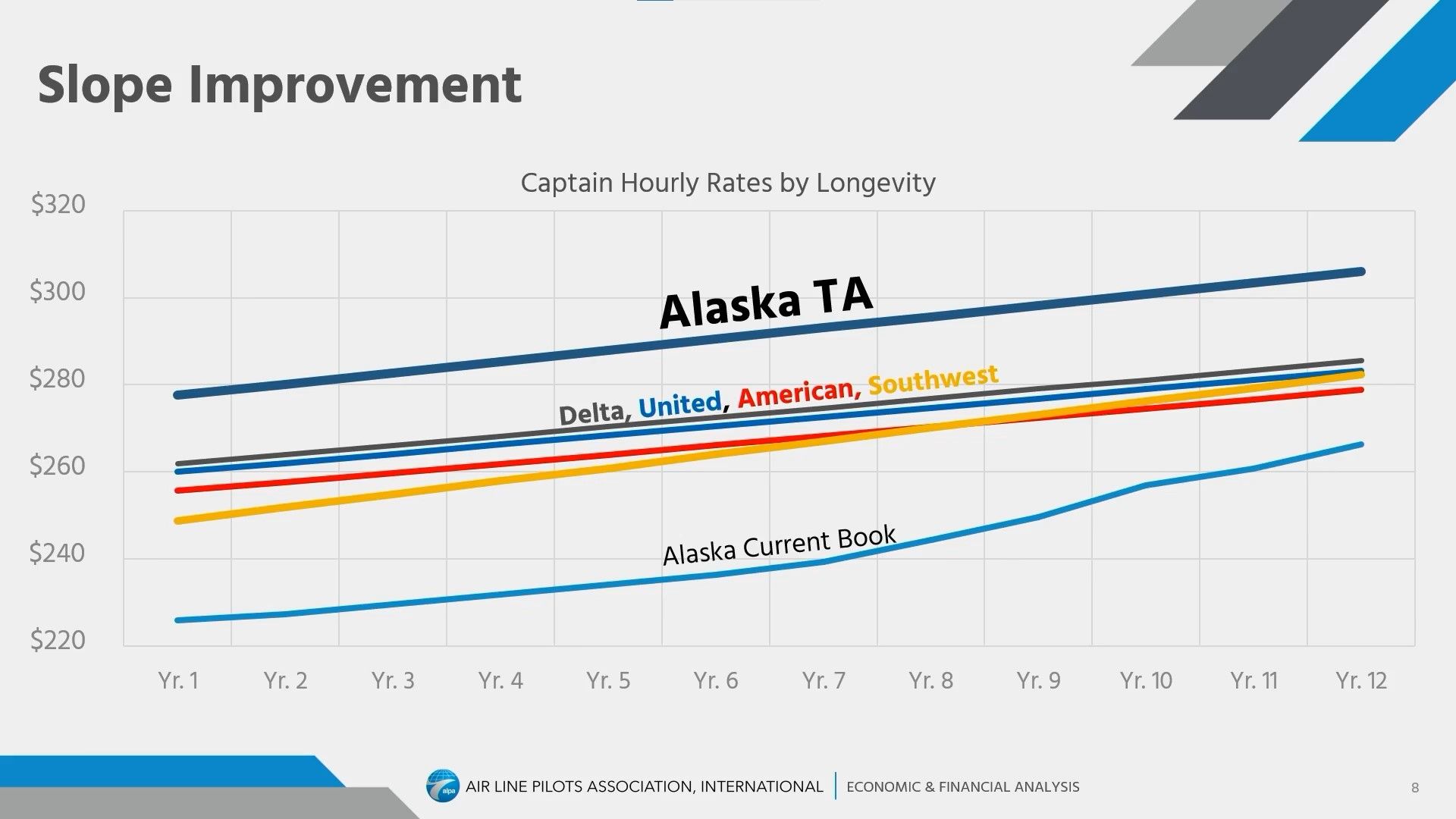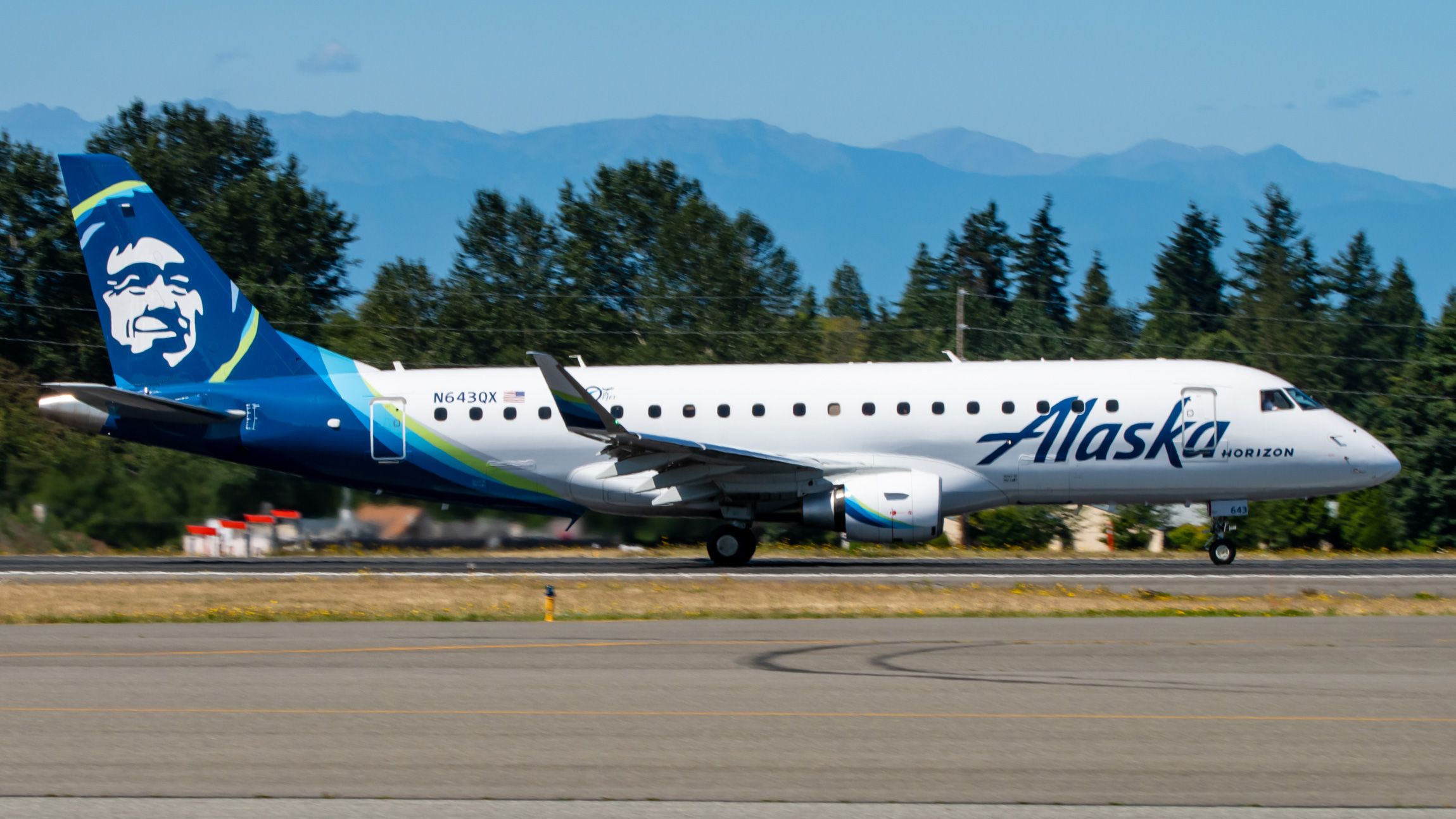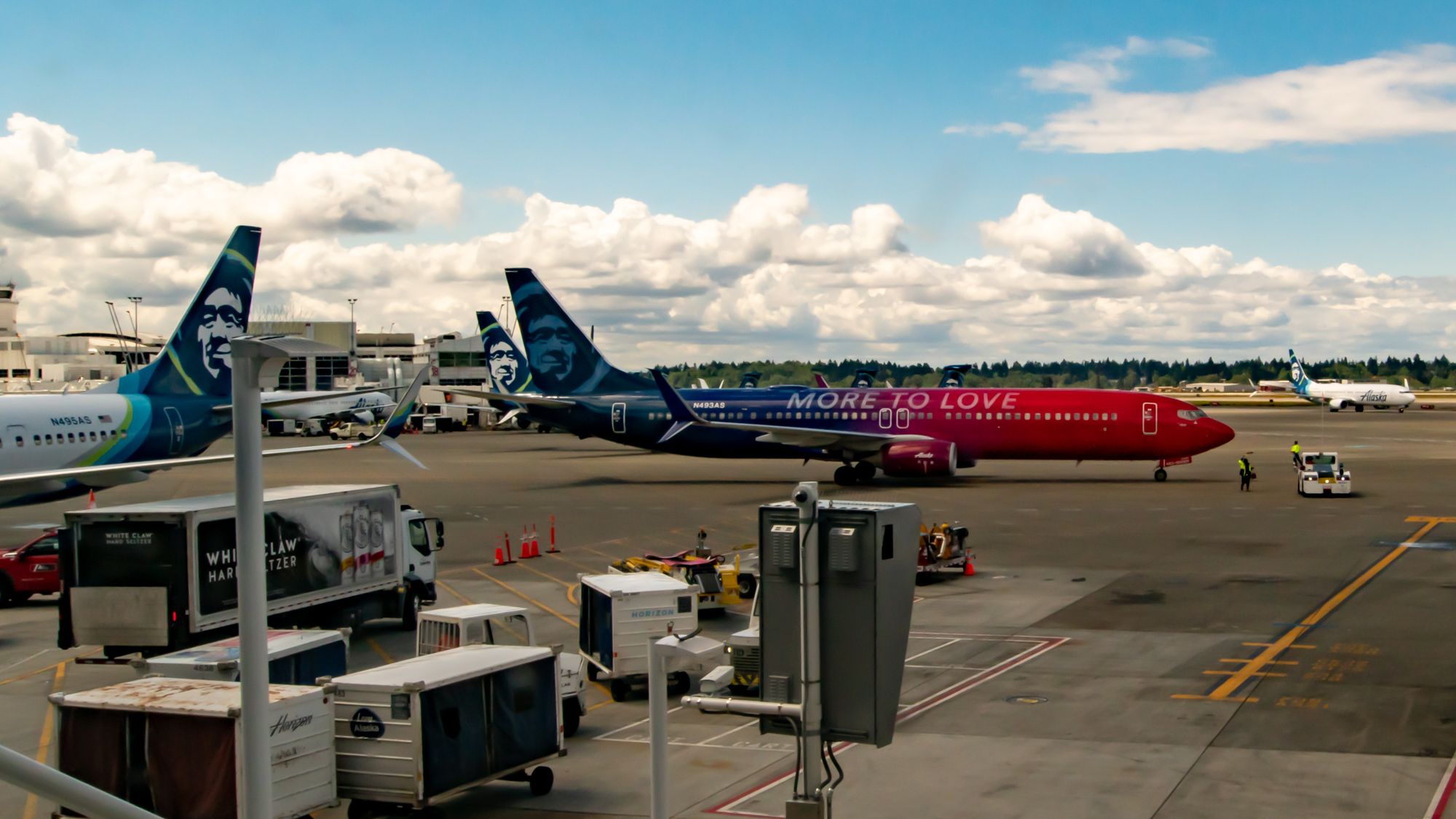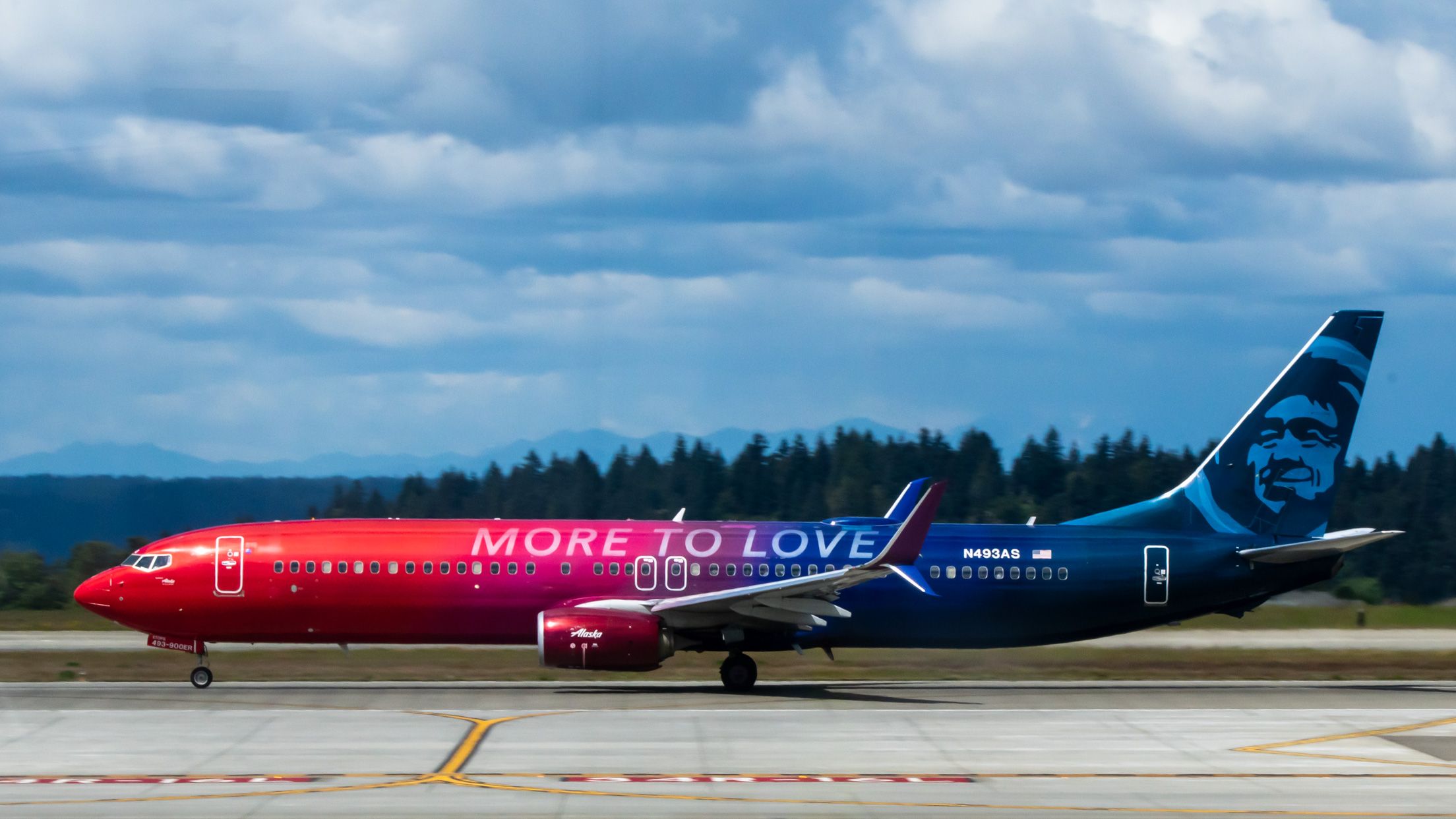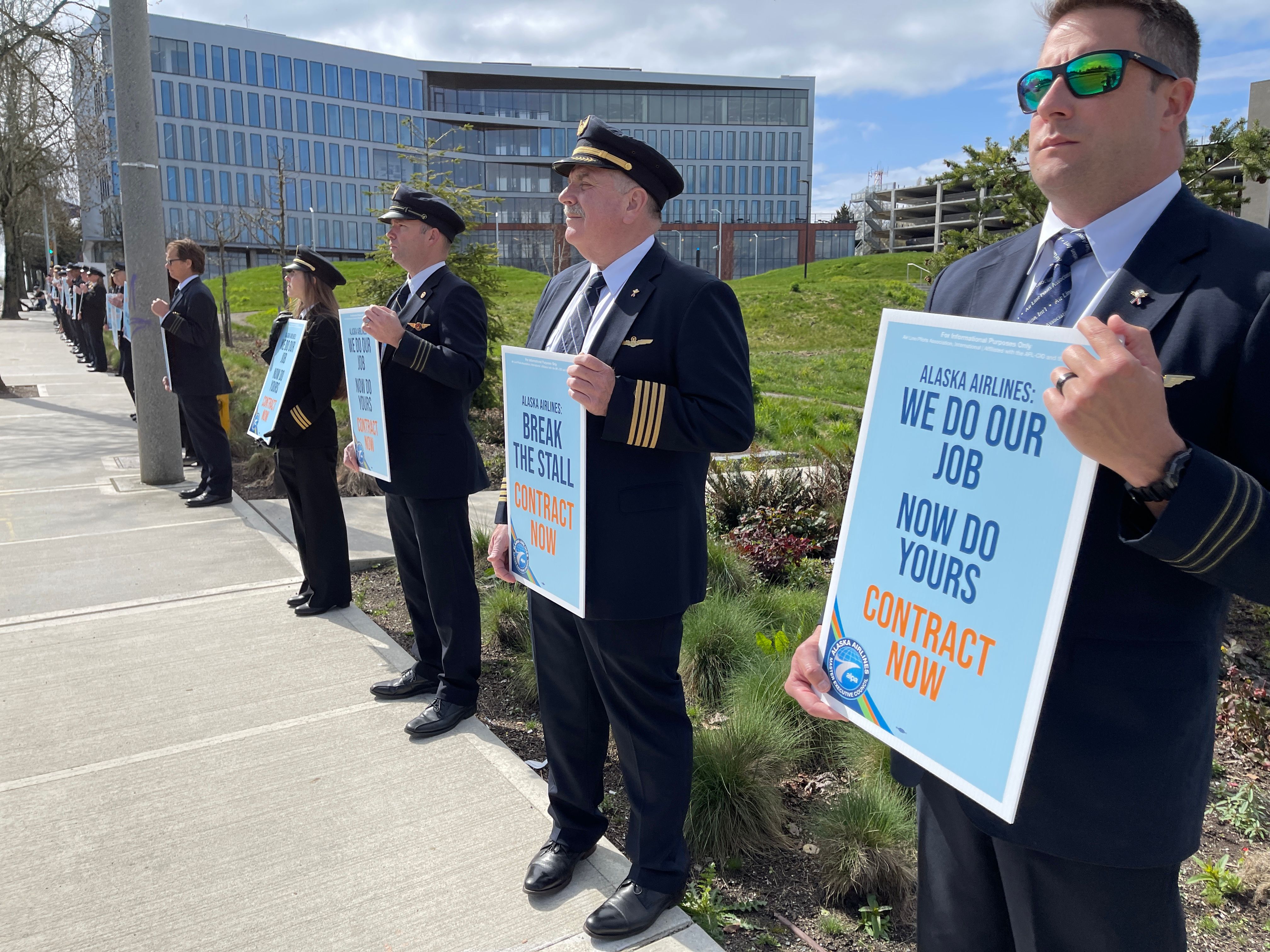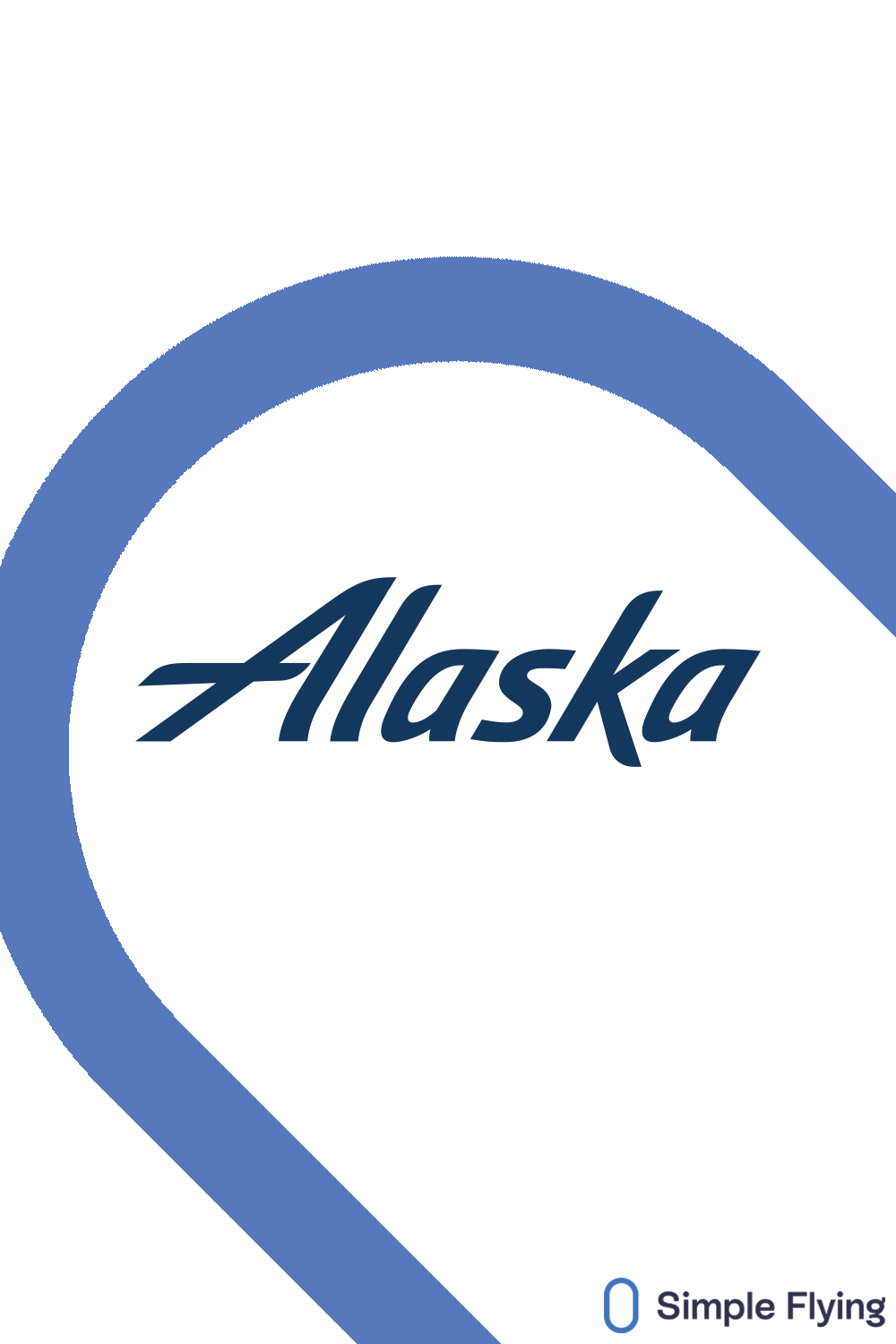The Air Line Pilots Association (ALPA) chapter representing Alaska Airlines pilots ratified on October 17th a new collective bargaining agreement (CBA) contract, with 82% of the 96.37% eligible pilots voting in favor. The new contract addresses critical issues for the pilots – such as scope and catching up in pay versus the airline’s competitors.
Contract affirms pilots’ place in Alaska Airlines
In the words of MEC Chairman Will McQuillen;
"Our goal was to negotiate an agreement where our pilots could make Alaska Airlines a lifelong career. This contract is good for our pilots and their families and also good for our airline.”
The contract will address critical issues like pay, scope, and scheduling issues. For instance, Alaska Airlines pilots will have industry-leading pay and better work rules.
An official Alaska Airlines statement quoting Alaska Airlines’ CEO Ben Minicucci clarifies that the new contract at Alaska Airlines is an affirmation of the pilots of Alaska Airlines.
“Our pilots are leaders in our operation. While it took some time, I’m glad to have them working under a new contract that values their contributions to Alaska. I’m grateful to our colleagues at ALPA who bargained with determination and a fierce dedication to our pilots. This new contract reiterates what many of us have known for decades: Alaska is a great place to spend a pilot career.”
New pay rates
The contract addresses many outstanding issues for Alaska Airlines. First, as McQuillen explained to Simple Flying, the “Alaska Discount” is no more as the new "Alaska TA" line above is now ratified, taking Alaska Airlines' pay from behind the big four to industry-leading pay. Second, contracted pilots will be paid according to this payscale per hour of flying:
|
Years of Service |
Captain |
First Officer |
|
0 to 1 |
$277.65 |
$100.00 |
|
1 to 2 |
$280.15 |
$148.55 |
|
2 to 3 |
$282.69 |
$172.02 |
|
3 to 4 |
$285.28 |
$179.08 |
|
4 to 5 |
$287.83 |
$186.25 |
|
5 to 6 |
$290.47 |
$191.80 |
|
6 to 7 |
$293.04 |
$197.12 |
|
7 to 8 |
$295.61 |
$201.85 |
|
8 to 9 |
$298.22 |
$204.08 |
|
9 to 10 |
$300.77 |
$207.48 |
|
10 to 11 |
$303.40 |
$209.50 |
|
11 and Up |
$306.00 |
$211.54 |
Come September 1, 2024 – this is where pay increases will conclude under the new ratified contract:
|
Years of Service |
Captain |
First Officer |
|
0 to 1 |
$300.31 |
$108.16 |
|
1 to 2 |
$303.01 |
$160.67 |
|
2 to 3 |
$305.76 |
$186.06 |
|
3 to 4 |
$308.56 |
$193.69 |
|
4 to 5 |
$311.31 |
$201.45 |
|
5 to 6 |
$314.17 |
$207.45 |
|
6 to 7 |
$316.95 |
$213.20 |
|
7 to 8 |
$319.73 |
$218.32 |
|
8 to 9 |
$322.56 |
$220.73 |
|
9 to 10 |
$325.31 |
$224.41 |
|
10 to 11 |
$328.16 |
$226.60 |
|
11 and Up |
$330.97 |
$228.80 |
However, to prevent another "Alaska Discount" as just ended, pay scales will be averaged of American, Delta, Southwest, United, and JetBlue pilot pay for flying 737- and A320- family aircraft. If that average exceeds these amounts, the average will be used to adjust the pay scale to ensure Alaska Airlines pilots don't fall behind.
Get the latest aviation news straight to your inbox: Sign up for our newsletters today.
Scope
Arguably the top concern for the Alaska pilots in negotiations was scope, or what the CBA covers. The scope section is intended to guarantee Alaska Airlines pilots do mainline Alaska Airlines flying – unless the pilots union agrees otherwise. It also ensures that as Alaska Airlines' regional airline Horizon Air acquires Embraer 175s, as pictured above, with 76 passenger seats and a range of 2,200 NM / 4,074 km, those pilot jobs do not displace mainline Alaska Airlines pilot jobs.
How? There is now a ratio requirement between regional jets and mainline jets to ensure that Alaska Airlines’ mainline flying grows when investments are made in regional flights. As union leader John Sluys said in the below podcast explaining the contract, “Anything seating between 50 and 76 seats are limited to 43% of the mainline aircraft total”. So if the regional aircraft fleet grows, the mainline aircraft fleet must grow – thereby addressing a vital concern of the pilot's union members.
The contract also guarantees that two pilots will do the flying of Alaska Airlines' aircraft. This is unless another US airline goes to one pilot and an agreement is reached for Alaska Airlines to do the same.
There are also protections and standards in the event of Alaska Airlines merging with another airline or selling off pieces of the airline. According to the union, this is "fire insurance," considering the past few decades of developments in the US airline industry.
Scheduling
Scheduling was a vital issue for the pilots in negotiations, as many complained of the inability to make credible plans for their lives. Instead, scheduling pilots with the airline’s flight schedule will now be handled via a union-controlled preferential bidding system (PBS) to ensure pilots find most of their assignments are productive, fulfilling flight assignments. The PBS will allow pilots to bid for desired flights to fly, guard desired days off as much as possible, and keep pilots from flying more than four days in a row, for starters.
Furthermore, on trips that are multiple days from home PBS will work to keep the pilots flying within limits prescribed by Federal Aviation Regulations (FAR) Part 121, section 471. For reference, these are the hard caps on flight time for all US “commercial flying” by licensed pilots of:
- 1,000 hours in any calendar year;
- 100 hours in any calendar month;
- 30 hours in any seven consecutive days;
- 8 hours between required rest periods.
That said, PBS will allow pilots to have better control over their schedules and hopefully reduce pilot fatigue. To McQuillen,
“It’s a pretty unique provision that we now have, where we have control over being able to write the schedules ourselves as a union, and we have an agreed baseline."
Finally, additional compensation is built in for flights that arrive more than two hours late, as well as better safeguards for irregular operations. The hope is that this will help nudge Alaska Airlines' management to honor the time of not just pilots but other employee groups and passengers. Ultimately, PBS will now ensure schedules are optimized for pilot compensation.
Alaska Pilots’ flight path to a contract
One of the things that both MEC President Will McQuillen and Strategic Planning Chairman Ronan O’Donoghue stressed in their interview with Simple Flying is that the contract would have been impossible without member unity. The union invested several years of member-bonding events after the merger with Virgin America to reduce natural tensions. Then COVID-19 hit, which required a cessation of team-building in-person gatherings until sufficient union member vaccination.
The union’s strategic plan was rebooted in April 2021, planning to rotate for take-off in spring 2022, if necessary, to bring that pilot unity to a public display to pressure airline management to conclude negotiations.
As we know now, public displays of Alaska Airlines’ pilot unity were held, with an April 1 informational picket, and due to subsequent management recalcitrance, shortly after a strike authorization vote was validated by the members. To have McQuillen summarize,
“We built that unity. And then we leveraged that unity to deliver a strong message, you know, to management that, indeed, our priorities needed to be addressed.”
The pilot unity was necessary because of 2021 Alaska Airlines management e-mails sent to the pilot group first on July 16 saying, “There are a few areas that aren’t open for negotiation” on scopes, such as ratios of mainline to regional aircraft, codesharing, or merging. On September 24, 2021, the airline management perceived the Alaska Pilots’ union as insisting that scope came first. As previously mentioned, those matters are now in the final contract – clearly demonstrating that union unity matters.
Also helpful was that the union maintained a positive tone in its public-facing communications. The positivity made it clear that the union genuinely wanted to advocate for a stronger future for Alaska Airlines.
One last thing
The Alaska Pilots Podcast will have new episodes after Monday’s ratification. To the union President McQuillen, the podcast is “A valuable means of communication to our pilots” that “seems to be well digested and liked. So it'll continue.”
What are your thoughts on developments? Please share your thoughts in the comments.

